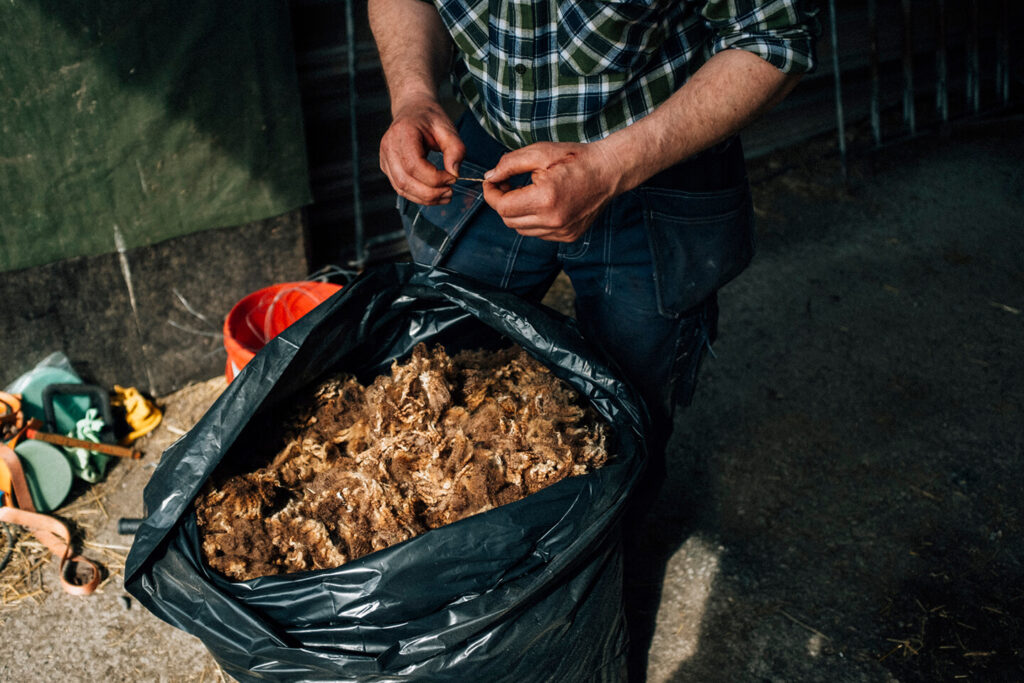Wool brokers could play key role in reforming Swedish wool industry
2023.02.14

Axfoundation is spearheading the Swedish Wool Initiative, a cross-sectoral collaboration with a vision to decrease Swedish wool waste down to zero.
Wool brokers could be instrumental in streamlining the value chain for Swedish wool, but today large geographical areas in Sweden lack such functions. This, together with an increased need for standardized processes to scale up the business, are two of the findings in the recent business modeling carried out by Chalmers Industriteknik for The Swedish Wool Initiative. With increased knowledge and better coordination, Swedish wool has the potential to enter the market as a premium product with many areas of use – from items in fashion as well as outdoors, to home furnishing.
“Wool brokers could play a key role in the collection of wool and establish strong relationships with other actors in the value chain. A single point of contact could increase the incentives for wool producers to collect and sell the wool, and increased knowledge of how to improve the quality of the wool could create better profitability for multiple actors,” – Johan Sidenmark, project manager for the Swedish Wool Initiative at Axfoundation.

Swedish wool brokers could reform the Swedish wool industry, according to Chalmers Industriteknik's business modeling.
Today, there are only a few wool brokers in Sweden buying Swedish wool directly from farms and selling on to textile producers. In addition, these brokers cover far from all regions with sheep production in Sweden. So far, the wool brokers have also lacked standardized work processes and coordination, something that The Swedish Wool Initiative now aims to address.
According to the business modeling carried out within the project, wool brokers could both increase in number, and broaden as well as streamline their operations to cover more steps in the process and create a sustainable business model. The broker role could include everything from advice to wool producers, contract management, coordination of shearing and transport of wool, to services such as scouring, classification, valuation, pressing, warehousing, and sales and distribution to customers.
The Swedish Wool Initiative has already shown that wool as a raw material has great potential. The demand for textile fibers is expected to increase by 150% by 2050 and more and more actors in the fashion and home textile industries realize the unsustainability of using fossil materials or water- and chemical-demanding cotton for textile production. Instead, conscious brands demand regionally produced, high-quality natural materials that enable the transition to a more sustainable and circular industry. Swedish wool is one such material, with fibers that can be recycled several times as they are far more durable compared to, for example, cotton.
“In terms of pricing, Swedish wool will have difficulty competing with imported wool from New Zealand, but that is not the intention. Instead, Swedish wool has many advantages. It’s locally produced, bio-based, recyclable, and produced in a country with high animal welfare. It can therefore be sold to a segment that has higher requirements for quality and durability,” – Johan Sidenmark, Axfoundation.

Swedish wool is bio-based, recyclable, durable and must be produced according to high animal welfare standards.
Sweden imports more than 1,500 tons of wool annually, while at the same time, more than half of the wool produced by Swedish sheep is thrown away. With the right conditions, Swedish wool has great potential to take larger market shares. Today, however, market demand is uneven. To scale up the use of Swedish wool, it is important to find areas of use for all types of wool qualities, even wool that is not suitable for clothing production.
“We are trying to find a market also for the quality of wool that is not suitable for yarn production. It can be felted wool that can still be used as, for example, a needle felt for sound absorbers or padding for furniture and textiles. Today, however, we see no demand either from furniture manufacturers, upholsterers or interior designers, ” – Charlotte Jansson, wool broker at Västkustens Ullinsamling in Laholm and one of the project’s partners.
With an expansion of the wool broker role, there is, according to the business modeling, potential for at least 6 wool stations with each a full-time working wool broker in the southern half of Sweden. At least 5 sheep shearers could cooperate with each wool station and manage the shearing on all farms within a radius of 15 km. If the capacity of the wool station increases from today’s approximately 40 tons of wool per year to 100 tons, the profitability could also be improved, with further investments in equipment leading to an increase in efficiency.
“It’s great to see that Chalmers Industriteknik has identified the potential in developing the role of wool brokers for scaling up the Swedish wool industry. I believe that more actors need to realize that Swedish wool is a valuable resource instead of seeing it as a by-product of meat production. It is important to use the assets we have and strive to minimize the waste of resources to be able to approach a circular economy.” – Johan Sidenmark, Axfoundation.
































